Precise measurement standards have revolutionized museum science, helping nail down where artifacts
Measurement standards underlie most fields of science – without them, researchers couldn’t compare the results of different studies.
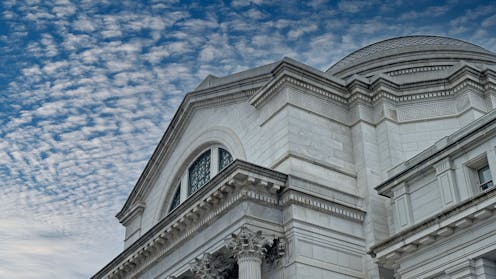
On a cool February morning in 1904, a spark ignited a fire in the heart of downtown Baltimore. Within hours, a raging inferno swept eastward across the harbor district, consuming everything in its path. By evening, the local firefighters were overwhelmed, and the city sent telegrams to the fire chiefs of major Northeastern cities pleading for help in battling the blaze.
Washington, Philadelphia and New York, along with other cities, responded quickly with dozens of engine companies. Yet when they arrived at the scene, many responders could not hook up to Baltimore’s hydrants since each city had its own threading standards to connect fire hoses.
The fire resulted in damages of over US$3.5 billion in today’s dollars. It created a call for a national standard of threads for hoses and fire hydrant outlets. These standards now improve emergency responses across the country – and the same concept of standardization allows for consistency and replicability in scientific research.
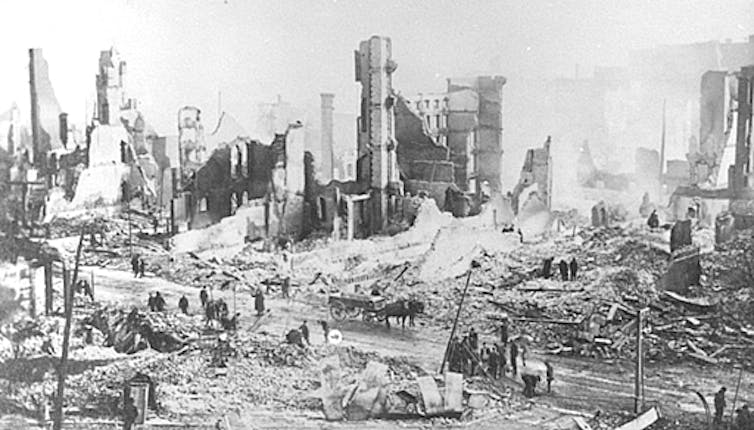
In science, the ideal way to evaluate data is related to the concept driving the calls for uniform fire hose equipment. When scientists compare their results to those obtained in other laboratories, or with previously published data, the comparisons are most meaningful if all datasets were made with standardized practices and reference materials.
Museum scientists like us provide compelling insights into the natural world, prehistory and historical culture heritage. Like that of many other scientists, our work, and the measurements we take day to day, depends upon standard references.
Here we offer two fascinating stories from the Smithsonian Institution’s Museum Conservation Institute that highlight how scientific measurement standards allow for exciting new discoveries:
You are what you drink
In 2007, the New Mexico Bureau of Reclamation exhumed the remains of dozens of Civil War-era soldiers from the ruins of Fort Craig. They had been left behind when the fort was abandoned in 1885.
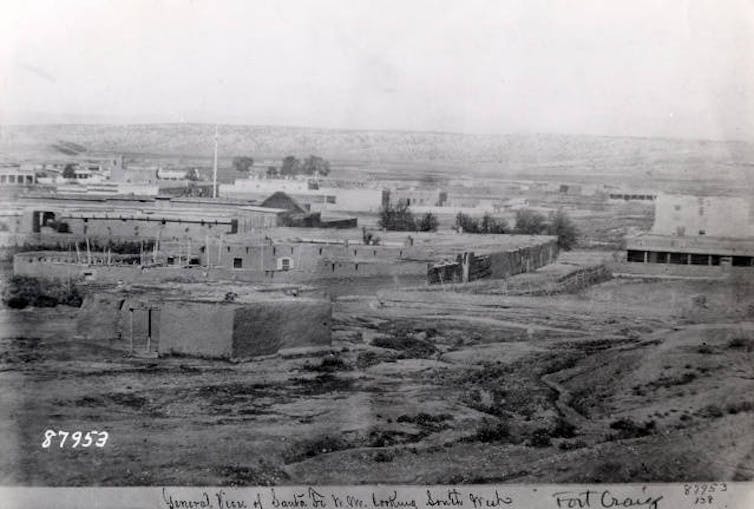
Anthropologists from the Smithsonian and the Bureau of Reclamation in New Mexico identified the remains as belonging to a diverse range of people – including a few dozen African American Buffalo Soldiers, a group that made up a relatively small percentage of the U.S. military at that time.
Historical records tell researchers that most of the military units at Fort Craig mobilized out of Kentucky and Virginia, but official records don’t always tell the full story. The group of project scientists, which included one of us, Christine France, needed a way to confirm the origin of these individuals and restore some identity to these forgotten soldiers.
The researchers decided to use stable isotope analysis on the bones. This technique counts the number of atoms of a particular element in the sample that have one or more extra neutrons – this is the “heavy” isotope – and compares it with the number of atoms that have a normal number of neutrons – this is the “light” isotope.
Drinking water in southern latitudes has more naturally occurring heavy oxygen atoms compared with northern latitudes. If a soldier’s bones had a relatively high ratio of the heavy to the light oxygen atoms, that soldier likely spent more time drinking water from the South.
Researchers have measured oxygen isotopes in other archaeological remains and in water all over North America, giving us a water “isotope map.” But matching the bone isotope values to the water map is like comparing apples to oranges, and every lab has subtle variations in its instruments. The scientists needed to normalize and calibrate the isotope ratios they had measured to a reference standard.
In this case, the standard was the average oxygen isotope value of ocean water, a convention that stable isotope researchers agreed upon as a consistent and readily available value. The researchers now had a uniform way to say how many more – or fewer – heavy oxygen isotopes the bones contained compared to the ocean water standard.
Other archaeology labs and the North American water isotope map use that same standard comparison, allowing them to directly compare all the bone isotope values to one another, and to the North American water isotope map.
Ultimately, the method helped the team identify several soldiers who came from quite far away to join the company, including individuals who likely grew up in the mid-Atlantic, New England and Southeast.
The exact circumstances that brought these soldiers together is lost to history. But the researchers’ ability to assign them geographic provenance with the help of reference standards gave them further insight into this pivotal time in U.S. history.
Volcanic glass mirrors
Humans have always been fascinated by looking at themselves in the mirror. In Mesoamerica – modern-day central and southern Mexico together with northern Central America – archaeologists have found convex round objects so finely polished that they have been termed mirrors.
But instead of using them for vanity, shamans from ancient times likely used them as a tool to access portals to other dimensions.
The oldest Preclassic mirrors (2000 BCE to 250 CE) were fashioned from polished iron ores, but later Postclassic period mirrors (900 CE to 1450 CE) were made from obsidian, a typically black silica-rich volcanic glass.
The collections at the Smithsonian’s National Museum of the American Indian contain six large, rectangular obsidian mirrors, purchased in the 19th and early 20th centuries. Their labels state they come from the “Valley of Mexico.”
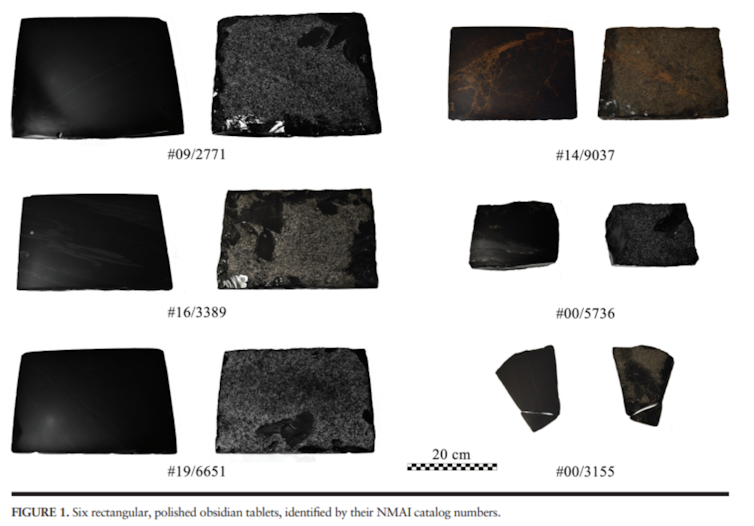
Archeologists rarely find rectangular obsidian mirrors like these at pre-Columbian dig sites. So, local artisans skilled in stone polishing likely made these unusually shaped objects upon request by Spanish invaders around the time of European contact. But which Mesoamerican culture did they come from?
Scientists from the Museum Conservation Institute, including two of us, Thomas Lam and Edward Vicenzi, and a member of the Austrian Academy of Sciences, worked with staff at the National Museum of the American Indian on an effort to pinpoint which volcano created the obsidian in the mirrors.
The location of the obsidian source would indicate whether the Aztecs who controlled eastern central Mexico, or the Purépecha who controlled an area west of the Aztecs, produced the objects, as both had ample sources of obsidian in their territories.
To conduct such a study, the researchers required two types of reference materials: obsidian that had erupted from known volcanic locations, and a reference obsidian that scientists already knew the composition of to confirm the quality of the analysis.
The first reference obsidians, from known locations, told the researchers about the differences in geochemistry of the volcanoes in central Mexico. That information allowed them to match the mirror analyses to the known volcanic location analyses and their map coordinates. The second reference obsidian served as a quality control specimen for the analysis.
Museum Conservation Institute scientists used a nondestructive technique called X-ray fluorescence spectrometry to analyze ratios of elements in the obsidians. The process works by “exciting” atoms in the obsidian, and a spectrum of X-ray energies is given off as the atoms “relax.”
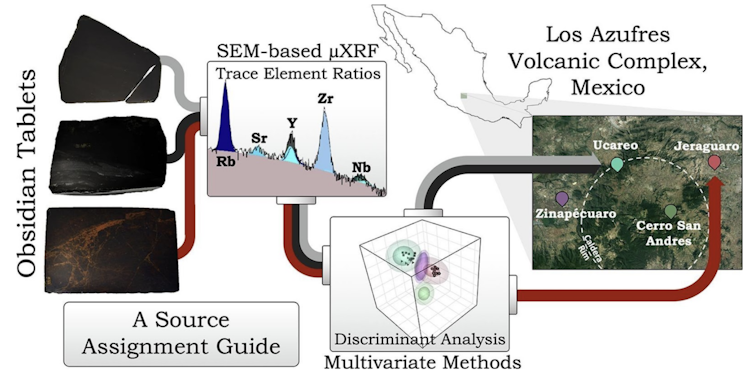
The results showed that all the specimens came from a region controlled by the Purépecha, not the Aztecs. The museum curators updated their records describing the mirrors to include this new information about their origin.
Creating standards
Standardized measurement procedures and reference materials play a central role in museum science. Organizations dedicated to rigorous measurement science, such as the National Institute of Standards and Technology, a federal government agency, help create some of these standards and research new measurement procedures.
Without their leadership, it would be far more difficult for researchers like us to produce high-quality data and discern the relationships between specimens in the natural and cultural heritage sciences. With quality measurement standards in our toolbox, we are finding new insights into human history and the natural world.
Edward Vicenzi is a guest researcher at the National Institute of Standards and Technology in the Material Measurement Laboratory.
Christine France and Thomas Lam do not work for, consult, own shares in or receive funding from any company or organization that would benefit from this article, and have disclosed no relevant affiliations beyond their academic appointment.
Read These Next
AI’s errors may be impossible to eliminate – what that means for its use in health care
Many health symptoms can be caused by multiple illnesses – if AI can’t tell the difference between…
Polytechnic universities focus on practical, career-oriented skills, offering an alternative to trad
Polytechnic universities try to incorporate skills-based learning into education.
The Ivies can weather the Trump administration’s research cuts – it’s the nation’s public universiti
While headlines focus on Harvard and Columbia, state universities train far more STEM students, power…





